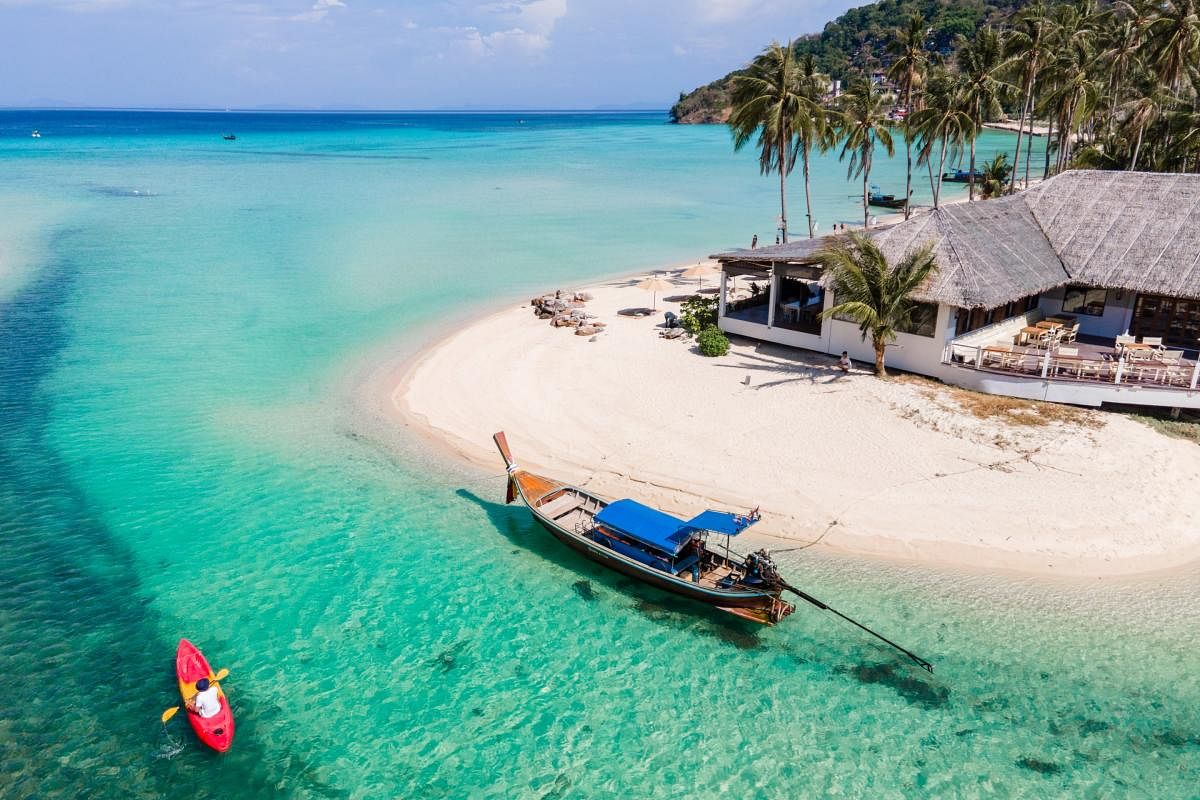Diving with a difference

There is very little doubt in my mind that nature is one of our greatest teachers. Sadly, it took a pandemic for us all to absorb the full impact of this truism. While terms like “eco-friendly” and “sustainable travel” were always bandied about, the intentions and gravitas behind them were always a moot point to me.
But now, more than ever, we are being conscious of our impact on the planet and its ecosystems. We take new steps every day towards more sustainable travel, and that is very encouraging. But do we truly put our money where our mouth is? Do we practice what we so passionately preach? I finally got my answer a few weeks ago. Coming back from an eco-friendly (I know, there we go again) vacation — where I island hopped along Thailand’s Andaman Coast — the sense of optimism and hope is palpable. Yes, we can make a difference is what I heard myself repeating on a loop at almost every step of that memorable trip...
Hope springs eternal
It all started becoming a little more clearer to me when I visited the idyllic SAii Phi Phi Island Village, an hour’s speed boat ride away from the main island of Phuket. Here I saw how both the island’s Gold Palm Dive Centre and Marine Discovery Centre have come together to create immersive, eco-sensitive diving and snorkelling experiences that allow travellers to explore the vibrant underwater world in a highly responsible way.
This I was told, was done via a series of professionally-led diving excursions from the PADI-certified Gold Palm Dive Centre, which is also part of the UN’s Green Fins sustainability programme. Here divers get to witness first-hand the work of the resident marine biologist, Nantiphat Saechao who works tirelessly to replenish the area’s rich and diverse ecosystems.
Having visited the Marine Discovery Centre and learning about the various projects being undertaken, divers like myself can take a trip out into the sparkling waters of the Hat Nappharat Thara-Mu Ko Phi Phi National Park. And see the effect these initiatives are having first-hand. Including coral propagation and breeding along with release programmes for clownfish and bamboo sharks.
Going deep
Before we head out in small, low-impact groups, we are given a briefing on marine conservation to ensure that we act responsibly and tread carefully. All the while making sure to cause as minimal an impact to the delicate marine ecosystem we’re to be introduced to as possible.
Diving into this spectacular seascape, I got to explore everything from the freshly planted fields of sea grass, which are wonderful nursery habitats for small fish. Including the iconic clownfish, unfortunately, made famous (and thus, in high demand) thanks to the Finding Nemo animated movie. My fellow divers and I also got to see newly-grown coral at the house reef and the colourful sea life that depend so much on it. While the bamboo shark breeding programme is still in its incubation stages, we were fortunate enough to see other keystone species in the area, such as blacktip reef sharks, leopard sharks, green turtles, hawksbill turtles and even whale sharks further offshore. Once back on terra firma, I was told how much of an impact the centre and governmental regulation have had with regard to other ecologically harmful aspects of tourism such as waste and pollution.
Important baby steps
Having dived in the same area way back in 2017, I was soon to notice that the seas of the National Park are now much cleaner. This, Saechao tells me, is thanks to the efforts of the marine centre that works with local villagers every week to clear waste from the area’s beaches and coastlines. Since this initiative commenced in 2021, 18 activities have been held and over 8,098 kgs of trash have been collected. I also see the impact conservation has had on formerly tourist overrun places like Maya Bay on the nearby Phi Phi Ley island. Around a 20-minute boat ride away from Phi Phi island, this bay — where the 2000 film The Beach was filmed — was shut from June 2018 right up to January 1, 2022. Today, not only are a limited number of tourists allowed (just 375 per one-hour slot), but also nature has reclaimed the bay and is flourishing. The once murky grey waters are turquoise blue again. Once as little as just 8% of its total coral population remained. Today, its waters are teeming with eight new species of 30,000 newly-planted coral fragments. This really goes to prove that hope, does, after all, spring (pun intended!) eternal.
Deccan Herald is on WhatsApp Channels| Join now for Breaking News & Editor's Picks